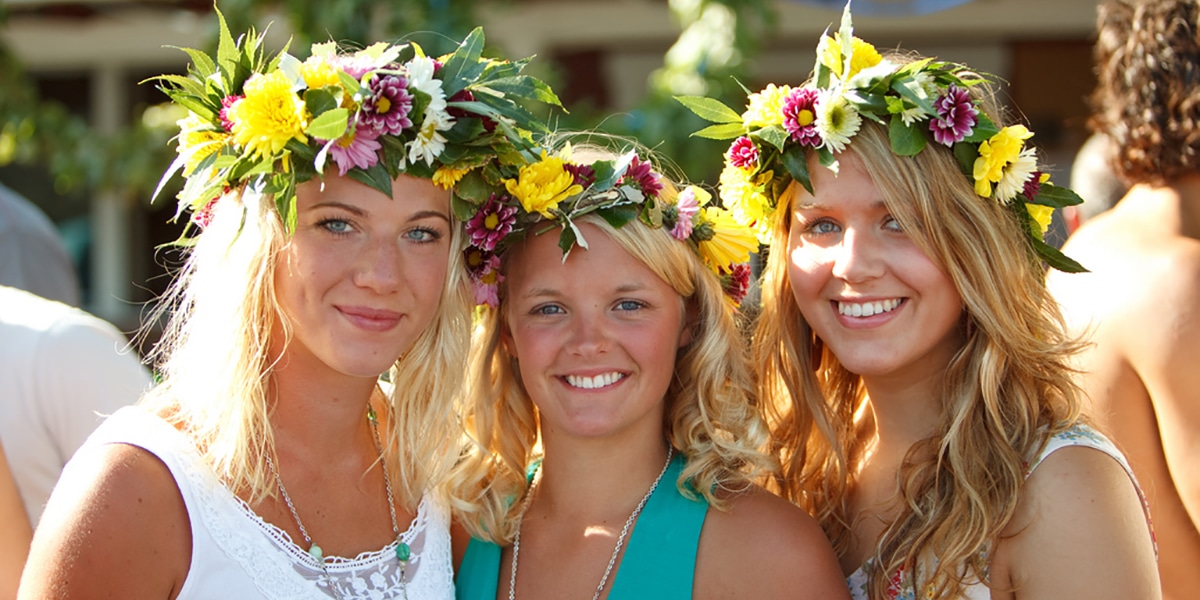Melanoma of the skin, the most serious type of skin cancer, is a bigger issue in Nordic countries than it is in Mediterranean countries. In fact, it accounts for a percentage of deaths 4 to 6 times higher in Nordic countries compared to in Mediterranean ones. Perhaps the prevalence of vulnerable skin types and travel habits among Nordic populations are partially responsible for this statistic.¹
Skin type is determined by hair colour, eye colour, skin colour, and other factors related to skin reactivity and sun sensitivity. Different human skin colours likely evolved due to the effects of UV radiation on vitamin deficiency. Too much UV exposure can cause folate deficiency, which can lead to birth defects,² whereas too little UV exposure can cause vitamin D deficiency, which can negatively affect bone health. Over time, people who moved to regions far from the equator with low UV levels evolved light skin to promote vitamin D production, whereas those who live close to the equator have dark skin to prevent folate deficiency³. Light hair, light eyes, and pale skin are common traits amongst Nordic individuals, thus, many fit into the skin type I and II categories. These individuals are the most sensitive to the sun out of all skin types, and are at the highest risk of developing skin cancer.
Travel trends are also important to consider. In 2013, the average Finnish person made about 1.7 trips abroad and 5.8 trips domestically, while the average person from the United States made about 0.2 trips abroad and 6.5 trips domestically. Higher incomes and harsh winters may push Nordic individuals out of their home countries and into sunnier destinations during certain parts of the year.⁴An inherently high risk of developing skin cancer coupled with travel to sunny destinations without proper sun protection is a recipe for sun damage. It’s easy to assume that it’s not a big deal to forgo sun protection while on vacation. After all, the goal is to relax – a little sunburn never hurt anyone, right? Wrong. Even one sunburn increases your risk of developing skin cancer,⁵ and a single blistering sunburn in childhood doubles your lifetime risk of developing melanoma.
The main lesson we can take away from the difference in melanoma prevalence between Nordic countries and Mediterranean countries is that it’s important to know our skin type. Being aware of our relative risk of developing skin cancer can motivate us to protect our skin from the sun. The Sun Index app will help you to assess your risk, and let you know when and how to seek sun protection based on your skin type and environment.Sources:
- Van Dusen, A. (2008). World’s Skin Cancer Hot Spots. Retrieved August 29, 2016
- Borradale, D., Isenring, E., Hacker, E. and Kimlin, M.G. (2014). Exposure to solar ultraviolet radiation is associated with a decreased folate status in women of childbearing age. J Photochem Photobiol B 131:90-5. Retrieved November 22, 2016
- Smithsonian National Museum of Natural History. (2016). Modern Human Diversity – Skin Color. Retrieved August 29, 2016
- Magrath, A. (2014). The world’s most well-traveled nations revealed: Finns and Americans holiday 7.5 times a year… but Brits only take three trips. Retrieved November 22, 2016
- Gohara, M. and Perez, M. (2009). Skin Cancer and Skin of Color. Retrieved August 24, 2016



